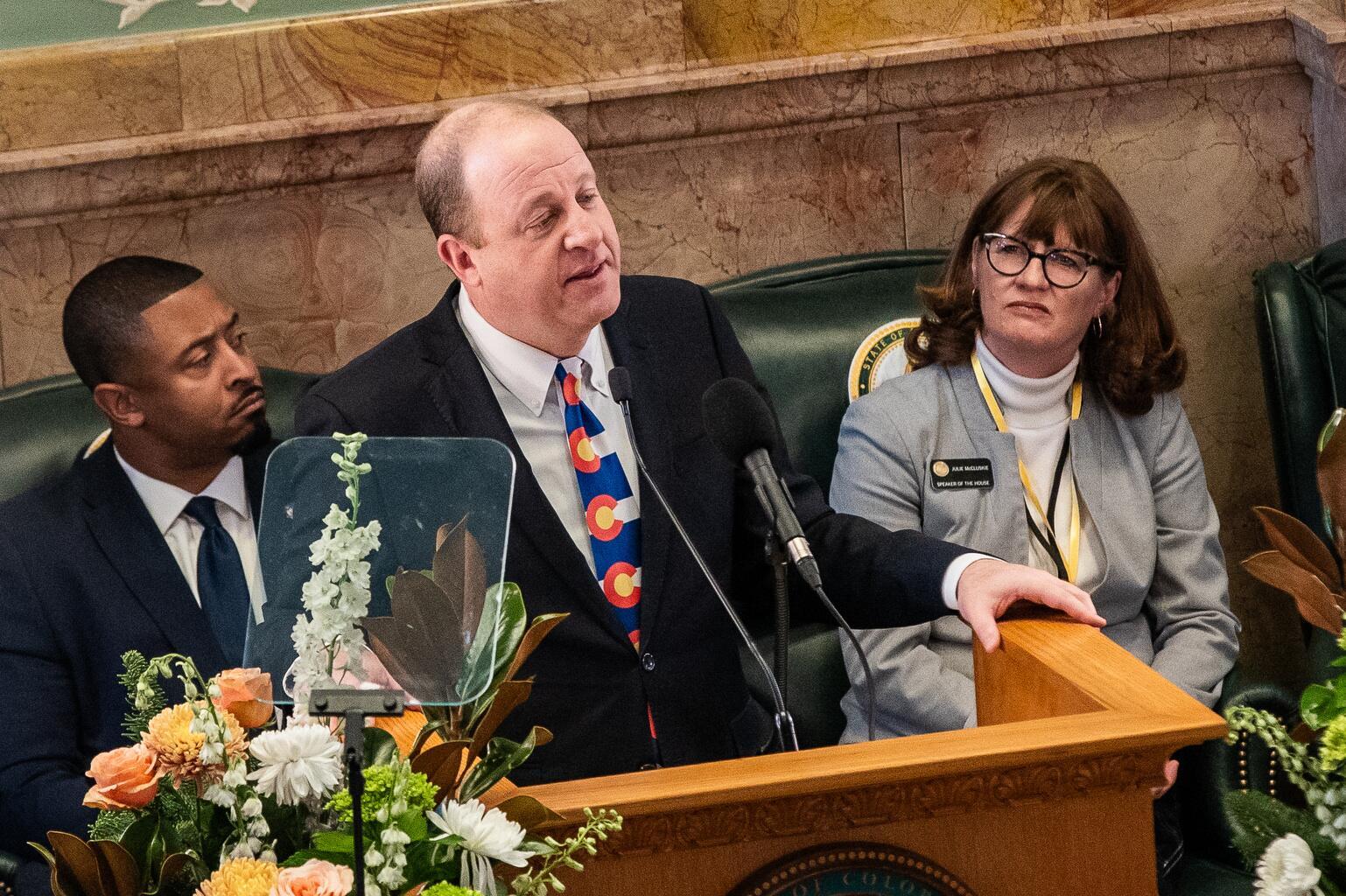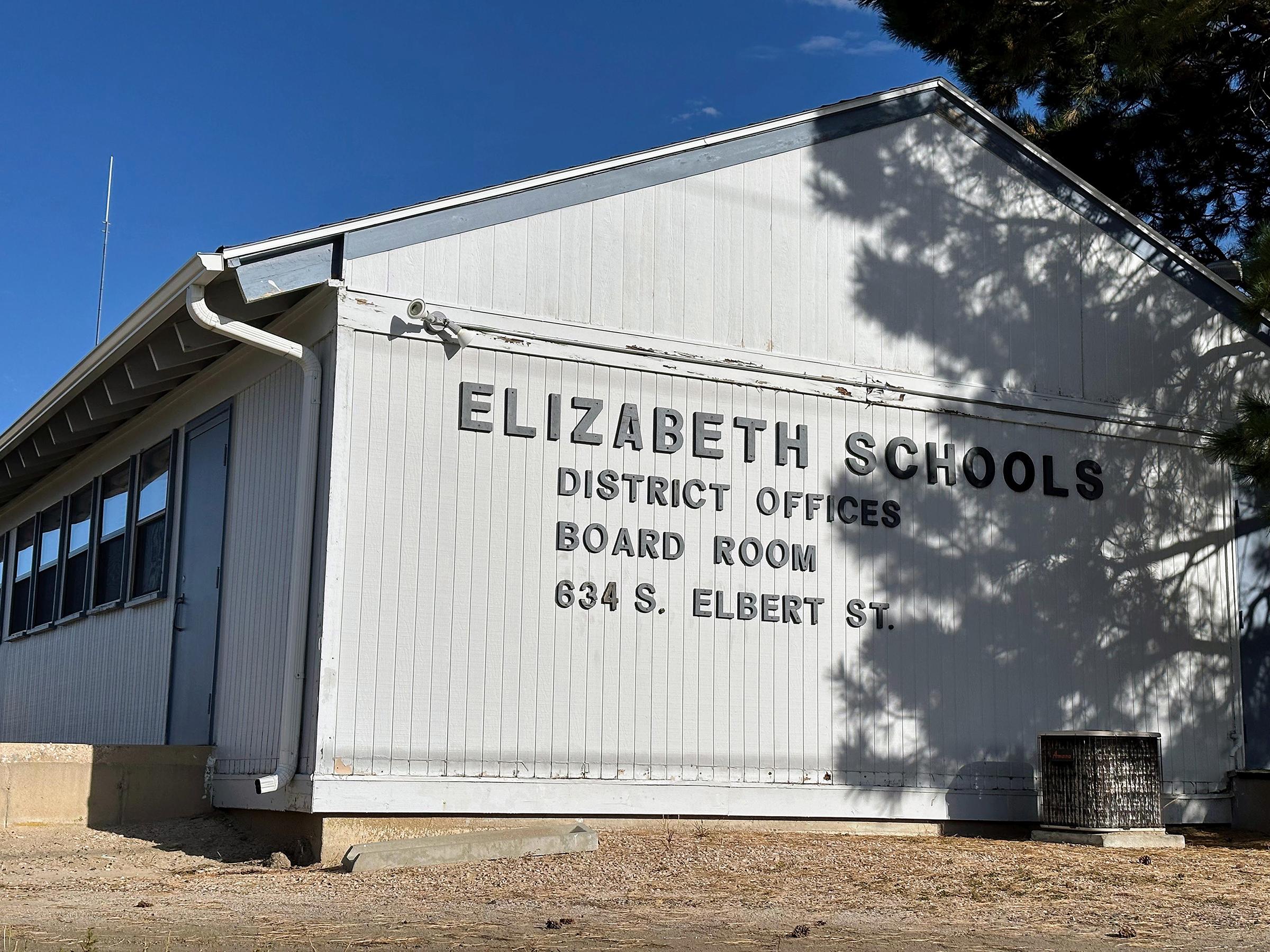
In reading and math, Colorado students outpace the rest of the country. That's according to the latest national report card. While that’s good news, challenges remain, from tackling absenteeism to uncertainty around the new presidential administration.
The Colorado Department of Education oversees approximately 881,000 students and 55,000 educators. Susanna Córdova is the Commissioner of Education. She was previously a teacher, principal and superintendent of Denver Public Schools.
Córdova spoke with Ryan Warner, senior host of Colorado Matters.
Here are takeaways from their conversation.
On the role of the Colorado Department of Education
“We really see our role at the department as being a convener. We think of three things that it's important for a state department to do. It's to serve, to guide, and to elevate. And one of the great services that I think we are able to provide is opportunities for districts to come together to share best practices. We really try to elevate the work that's happening around the state, through our social media channels, through Commissioner Chats, and really taking the best examples of people who are beating the odds and getting them to tell their story about what's going on in their district.”
On the big changes in how high schools ‘do school’
Córdova says the state recognizes the value of tapping students' interests about what they want to do after graduating high school. For some it’s college; for others, it’s going straight into the workforce. Big districts, like Cherry Creek and St. Vrain Valley School District have innovation centers that offer students training in dozens of distinct career pathways. Experiments in career-based learning are also taking place in rural Colorado, like in Genoa-Hugo, Cañon City, Fremont, and Holyoke.
Córdova sees this as a way to engage students and keep more of them in school.
“Fundamentally school is about helping students from very young ages learn to read, to write, to do arithmetic, to learn about the world, to learn about civics, to become better … something that we’re deeply invested in improving. And, it's about ‘what's the purpose behind those skills?’ If it's just for a book or just for a teacher, I think we're going to see more and more kids become disengaged. It's when it's connected to the world that they want to live in, the work that they're interested in, that they become motivated to really apply those skills.”
On what work-based learning looks like in practice
Córdova recently visited Holyoke, a small farming community in far northeast Colorado. The school district has placed a big emphasis on getting students ready for the workforce in the community.
“Every student in high school has the opportunity to do multiple internships while they're in high school with people from their community,” she said. “Sometimes it might be on a farm, sometimes it might be in the law office, it might be in a preschool — and get real-world work experience.”
During a panel discussion she attended, one young man described how he earned his commercial driver’s license as part of his last semester as a senior. “He drives loads of corn to the ethanol plant every day before he starts school at 11:30,” said Córdova. “He was so excited to talk about what he's doing and the benefit the community now has in a state that has a shortage of people with commercial driver's licenses.”
On the long tail of the pandemic
The “Nation’s Report Card” from the latest national test scores shows Colorado outpaces the rest of the country in reading and math. Colorado ranks fourth in 8th-grade reading and sixth in 4th-grade reading. But overall, Colorado students showed flat or slight improvements compared to the previous national test scores, except for fourth-grade math which showed significant improvement.
Córdova acknowledged that some of Colorado’s gradual decline in reading scores was happening prior to the pandemic, but the impact of the school disruptions accelerated gaps between affluent and low-income students and between white students and students of color.
“It tells us kids did not all have the same experience during those school disruptions,” she said. “It's really important that we continue to invest in helping accelerate the performance of students who are farthest behind.”
On what’s in place to close the reading gap between students
Colorado is seen nationally as an early adopter of support for developing early foundational skills in reading. This is the first year that the state has all the elements of a law called the READ Act --- meant to identify struggling readers and give them the support they need to read on grade level by third grade – in place.
“It's not just the materials, it's not just the teachers, it's not just the training, it's everything,” said Córdova. More than 25,000 elementary school teachers, administrators, principals and reading coaches have completed the required 45 hours of training in best reading practices. All school districts are now using high-quality instructional materials and more than 80 percent of the state’s educator training programs use a curriculum aligned to the “science of reading.”
Córdova said previously many teachers were trained in the ‘whole language approach’ to reading, which didn’t pay as much attention to ‘phonics’ or how words fit together which is critical to learning how to read. "We are actually seeing in schools that are part of our early literacy grants, really strong improvement,” she said. “We've got fewer kids who are furthest behind and more kids at the meeting or exceeding levels.”
On the connection between more funding and better academic performance
Córdova said there “definitely” is a connection between access to resources and performance. She said as a parent, when her child struggled, she paid for a tutor.
“And that personalized support that was just at my kids' levels really helped them. Not all parents can do that,” she said.
On a larger scale, all schools need to be able to give good “first instruction” and strong foundations to every child. For kids who aren’t making progress, they need tutoring, interventions, smaller classes and extra support to catch up.
Colorado has a new school funding formula that will be phased in that’s expected to do that.
On the tight state budget and K-12 funding
Two adequacy studies found Colorado needs to spend up to $4 billion more to adequately resource K-12 public schools.
Córdova applauded the bipartisan work that went into eliminating a mechanism (the budget stabilization factor) last year that allowed lawmakers to withhold money from schools every year for the past 14 years. She said it’s disappointing there is such a tight budget landscape this year and hopes K-12 doesn’t face cuts.
“Strong schools make strong communities. Schools need to change. We need to evolve. We need to improve. We know that, and it's going to be really important that we have the investments to ensure that we can address the teacher shortage.”
She said it’s increasingly difficult to attract teachers to Colorado because of the high cost of living and comparatively low salaries.
“It is a really challenging budget climate this year in the state --- these are not easy decisions and not easy choices. I think the adequacy studies really try to give us a roadmap for our aspirations of where we should aspire to get to.”
On reducing chronic absenteeism
About 27 percent of Colorado’s students are chronically absent from school, 10 percent or more of the school year. The state has launched a campaign called “Every School Day Matters” that includes increased training and resources for educators and school leaders. The grades with the highest absenteeism are Kindergarten, 9th, 11th and 12th grades.
Córdova said attendance is better in schools with career pathways or programs that connect to students’ interests. For students who miss school to work to contribute to the family income, she said paid internships through school can allow the student to do both.
The department’s new strategic plan includes a goal that high schoolers graduate with one of the big three: 12 credits that you can apply toward a degree, an industry credential (like a certified nursing assistant license or phlebotomy certificate), or a work-based learning experience.
On Colorado’s chronic teacher shortage
Districts have launched special programs to help classroom aides become teachers or set up pathways for high school students.
High school students can be part of a ‘Grow-Your-Own’ program to become a teacher. In several school districts, college students can get paid to work as a teacher’s aide in a classroom. Cherry Creek School District is offering them support in a cohort as they're going through college and then offering them early contracts.
Córdova put a plug-in for Teach Colorado. “Teach Colorado partners with the Department of Education to help people who are interested in becoming teachers. This could be high school students, it could be career changers, it could be people who are shortly out of high school or in college who are thinking about teaching. It's kind of like a one-stop shop.”
On the Trump administration's executive orders
Córdova said the State Department of Education is in the process of reviewing executive orders that are related to education and is waiting for more guidance. One of the executive orders directs the federal Department of Education to prioritize funding for school choice initiatives, including private and religious schools.
“I think Colorado's a great example of public school choice and how we support the opportunities for families to select schools. We've got open enrollment in Colorado. We have a vibrant charter school network in Colorado, so I think Colorado has a long history of supporting school choice, which I think is going to align really well.”
It’s unclear what the impact of the order will have on publicly funded vouchers, which don’t exist in Colorado for private or religious school tuition, or education savings accounts for private school tuition or tax credit scholarships.
Córdova sees the state as “still pretty purple” politically.
“What I really see are teachers and school leaders and district leaders who really care about all their kids, and I've been really heartened by the fact that when you get into classrooms, I don't see a lot of some of the culture war things that might be going on (in the press or school board meetings.) … When you're in classrooms, I think what you really see are teachers who care a lot about their kids who really want to see them be successful.”
On whether Colorado would be protected if the federal Department of Education were eliminated
“Probably no more than anyplace else,” Córdova said.
Most federal education funding flows through programs that support disadvantaged students, special education, and school meals. Smaller amounts support English learners or teacher training.
“The vast majority of Colorado’s funding comes through state and local. The federal funds that do come into Colorado would likely still come into the state. They might not come in block grants. It’s really hard to speculate. I think that we'll continue to see kids get fed. We're going to continue to see support for students in poverty. I believe deeply that as a nation, we understand the importance of a public school system that provides opportunities for kids. So many people in leadership have benefited from that … I would say I am a relentless optimist with a fair degree of pragmatism. And at the end of the day, I don't think that as a nation we can continue to thrive if we don't invest in our schools. Schools create the future for our nation.”







